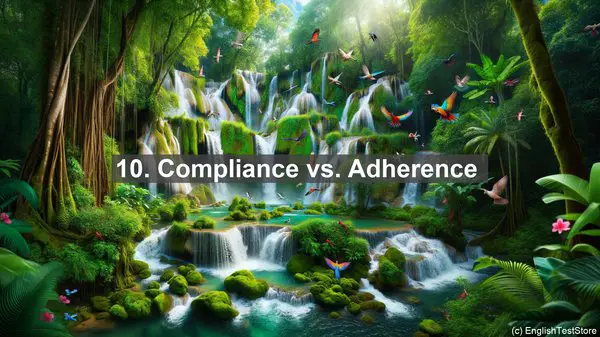Introduction: The Power of Words
Hello everyone, and welcome to our lesson on the top 10 commonly confused words in behavioral pharmacology. As students, we know the importance of language in our field. A single word can make all the difference in understanding a concept or misinterpreting it. So, let’s dive in and explore these words in detail.
1. Efficacy vs. Potency
Often used interchangeably, efficacy and potency have distinct meanings. Efficacy refers to the maximum effect a drug can produce, while potency relates to the dose required to achieve that effect. In simple terms, efficacy is about how well a drug works, and potency is about how much of it is needed. Remember, a highly potent drug may not necessarily be more effective.
2. Tolerance vs. Dependence
While both tolerance and dependence involve changes in the body due to drug use, they differ in nature. Tolerance occurs when the body adapts to a drug, requiring higher doses to produce the same effect. Dependence, on the other hand, is a state where the body becomes reliant on the drug to function normally. It’s important to note that tolerance can develop without dependence and vice versa.
3. Sensitization vs. Tachyphylaxis
Sensitization and tachyphylaxis are two opposite phenomena. Sensitization refers to an increased response to a drug with repeated use, while tachyphylaxis is a rapid decrease in response. Sensitization is often seen with drugs like amphetamines, where the effects become more pronounced over time. Tachyphylaxis, on the other hand, can occur with certain medications, leading to a diminished response.
4. Affinity vs. Efficacy
Affinity and efficacy are crucial concepts when it comes to drug-receptor interactions. Affinity refers to how well a drug binds to a receptor, while efficacy is about the drug’s ability to activate the receptor and produce a response. In simple terms, affinity is like a key fitting into a lock, while efficacy is about what happens after the lock is opened.

5. Agonist vs. Antagonist
Agonists and antagonists have opposing actions. An agonist activates a receptor, mimicking the effects of a natural substance. For example, opioids are agonists at the body’s opioid receptors. On the other hand, an antagonist blocks the receptor, preventing the natural substance or another drug from binding. Naloxone, used to reverse opioid overdose, is an antagonist.
6. Selectivity vs. Specificity
Selectivity and specificity are often used interchangeably, but they have subtle differences. Selectivity refers to a drug’s preference for a particular receptor, while specificity is about the drug’s ability to act only on that receptor and not others. A drug can be selective but not specific if it still has some effect on other receptors, albeit to a lesser extent.
7. Bioavailability vs. Bioequivalence
Bioavailability and bioequivalence are terms commonly encountered in pharmacokinetics. Bioavailability is the fraction of a drug that reaches the systemic circulation, while bioequivalence compares the rate and extent of absorption of different formulations of the same drug. In simple terms, bioavailability is about how much of the drug is absorbed, while bioequivalence is about how similar two formulations are in terms of their action.
8. Therapeutic Index vs. Safety Margin
Therapeutic index and safety margin are both measures of a drug’s safety. The therapeutic index is the ratio of the dose that produces the desired effect to the dose that causes toxicity. A higher therapeutic index indicates a safer drug. Safety margin, on the other hand, is the difference between the therapeutic dose and the dose that produces toxicity. A larger safety margin is preferable.
9. Half-Life vs. Duration of Action
Half-life and duration of action are related but not the same. Half-life is the time it takes for the drug concentration in the body to decrease by half. Duration of action, on the other hand, is how long the drug’s effects last. While half-life gives an idea of how often a drug needs to be administered, duration of action is about the overall duration of effect.
10. Compliance vs. Adherence
Often used interchangeably, compliance and adherence have distinct meanings. Compliance refers to a patient’s willingness to follow a healthcare professional’s recommendations, including taking medications as prescribed. Adherence, on the other hand, is a broader term that encompasses not just medication use but also other aspects of treatment, such as lifestyle modifications. Both are crucial for successful therapy.

